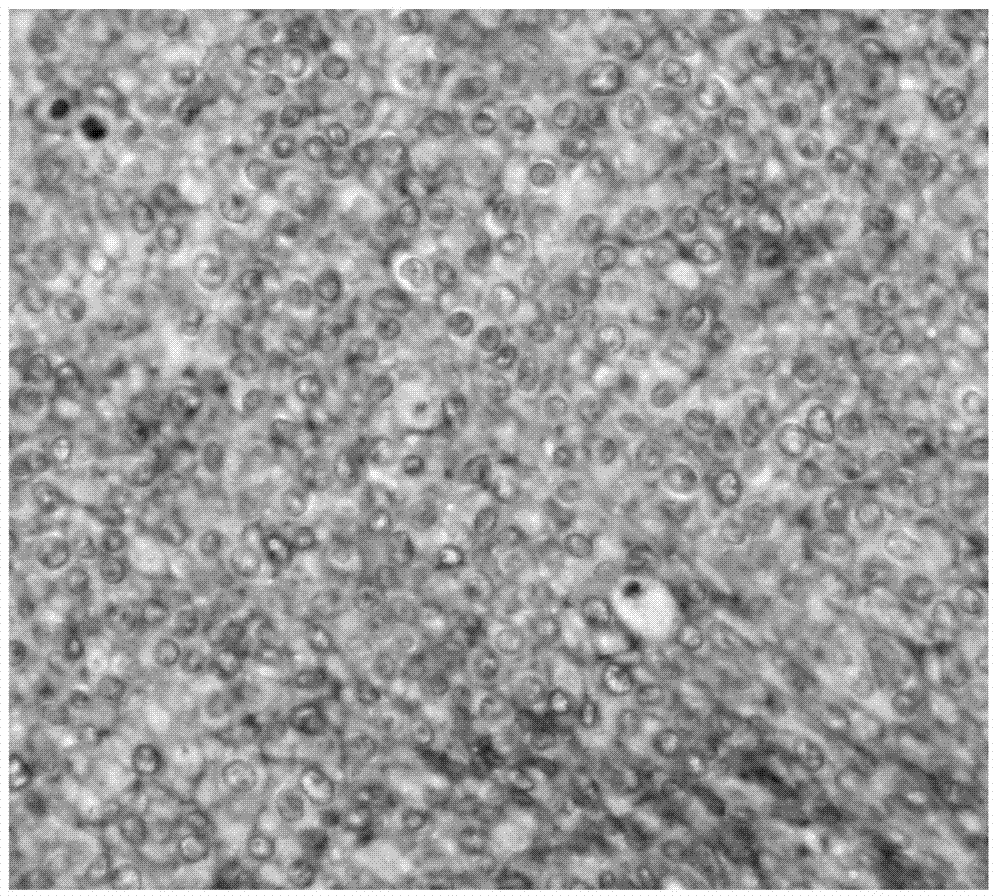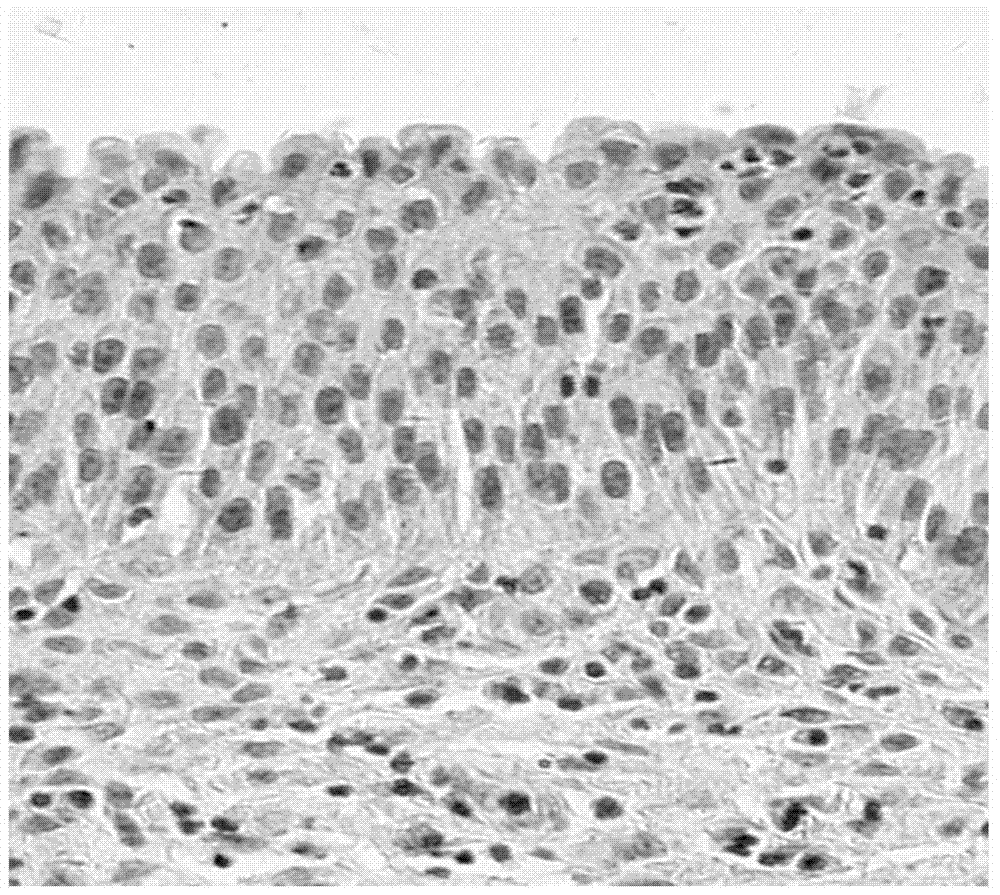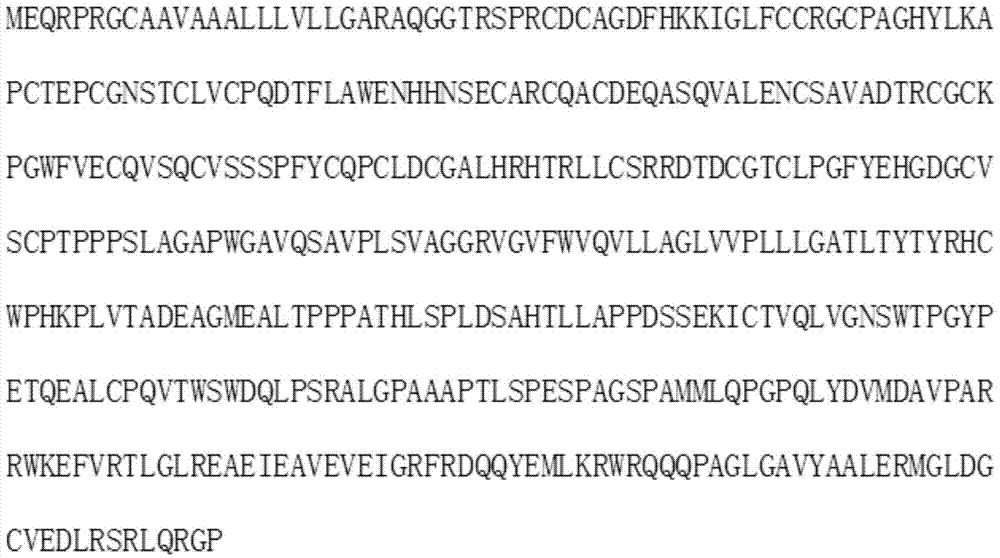Human urothelial carcinoma specific antibody and application thereof
A urothelial cancer, antibody technology, applied in the field of tumor immunology, can solve the problems of nuclear matrix protein, telomerase and microsatellite instability, unsatisfactory sensitivity or specificity, etc.
- Summary
- Abstract
- Description
- Claims
- Application Information
AI Technical Summary
Problems solved by technology
Method used
Image
Examples
Embodiment 1
[0018] Example 1: Preparation and purification of DTUC1 monoclonal antibody
[0019] (1) Preparation of hybridoma
[0020] Balb / C mice (purchased from Beijing Weitong Lihua Experimental Animal Technology Co., Ltd.) were immunized with human urothelial carcinoma tissue homogenate, and injected intraperitoneally at a dose of 100 μg / 500 μl / mouse. Mice were re-immunized 2 weeks later with the same injection volume and method. After the mouse serum titer reaches the requirement, the cell fusion is prepared, and the mice are boosted three days before the fusion. Mouse myeloma cells SP2 / 0 (ATCC: CRL-1772) were prepared at the same time as the mice were immunized. The hybridoma technology (Kohler and Milstein1975) was used to fuse the sensitized B lymphocytes with myeloma cells, and they were selectively cultured with HAT medium (purchased from Invitrogen).
[0021] Next, detect hybridoma cell culture supernatant by ELISA method: Coat 96-well plate with human urothelial carcinoma t...
Embodiment 2
[0026] Example 2: Identification of DTUC1 monoclonal antibody
[0027] The DTUC1 monoclonal antibody prepared in Example 1 was immunohistochemically stained on human urothelial carcinoma tissue sections (obtained from Cancer Hospital, Chinese Academy of Medical Sciences) according to conventional methods, and the results were as follows: figure 1 , 2 shown. The results showed that human urothelial carcinoma tissues were positively stained with DTUC1 monoclonal antibody, secondary antibody (anti-mouse IgG‐HRP) and DAB substrate (Wuhan Boster Bioengineering Co., Ltd.), while normal human urothelial tissues After staining with DTUC1 monoclonal antibody, secondary antibody and substrate, the reaction was negative.
[0028] Urothelial cancer cell lines 5637, UMUC3, SW780, J82, T24, RT4 and other cells were detected by flow cytometry according to conventional methods with DTUC1 monoclonal antibody. The results are shown in Table 1. The results showed that DTUC1 monoclonal antib...
Embodiment 3
[0034] Example 3: Preparation of immunodiagnostic reagents for human urothelial carcinoma
[0035] Using the DTUC1 antibody described in the present invention, combined with anti-human TNFRSF25 antibody B‐8 (purchased from Santa Cruz Biotechnology, Inc.), a highly sensitive double-antibody sandwich ELISA method was developed to detect human urine Urothelial carcinoma tumor antigen. The main method is to use B‐8 antibody (purchased from Santa Cruz Biotechnology, Inc.) as the stationary phase, and horseradish peroxidase (HRP)-labeled DTUC1 antibody as the detection antibody to detect urothelial carcinoma tumors in human urine Antigen TNFRSF25. Experiments have proved that the immunodiagnostic reagent for urothelial carcinoma of the present invention has the following positive effects compared with the prior art: (1) direct detection of urine without damage. (2) High sensitivity and strong specificity. The double-antibody sandwich enzyme-linked immunosorbent assay is used to de...
PUM
 Login to View More
Login to View More Abstract
Description
Claims
Application Information
 Login to View More
Login to View More - R&D
- Intellectual Property
- Life Sciences
- Materials
- Tech Scout
- Unparalleled Data Quality
- Higher Quality Content
- 60% Fewer Hallucinations
Browse by: Latest US Patents, China's latest patents, Technical Efficacy Thesaurus, Application Domain, Technology Topic, Popular Technical Reports.
© 2025 PatSnap. All rights reserved.Legal|Privacy policy|Modern Slavery Act Transparency Statement|Sitemap|About US| Contact US: help@patsnap.com



